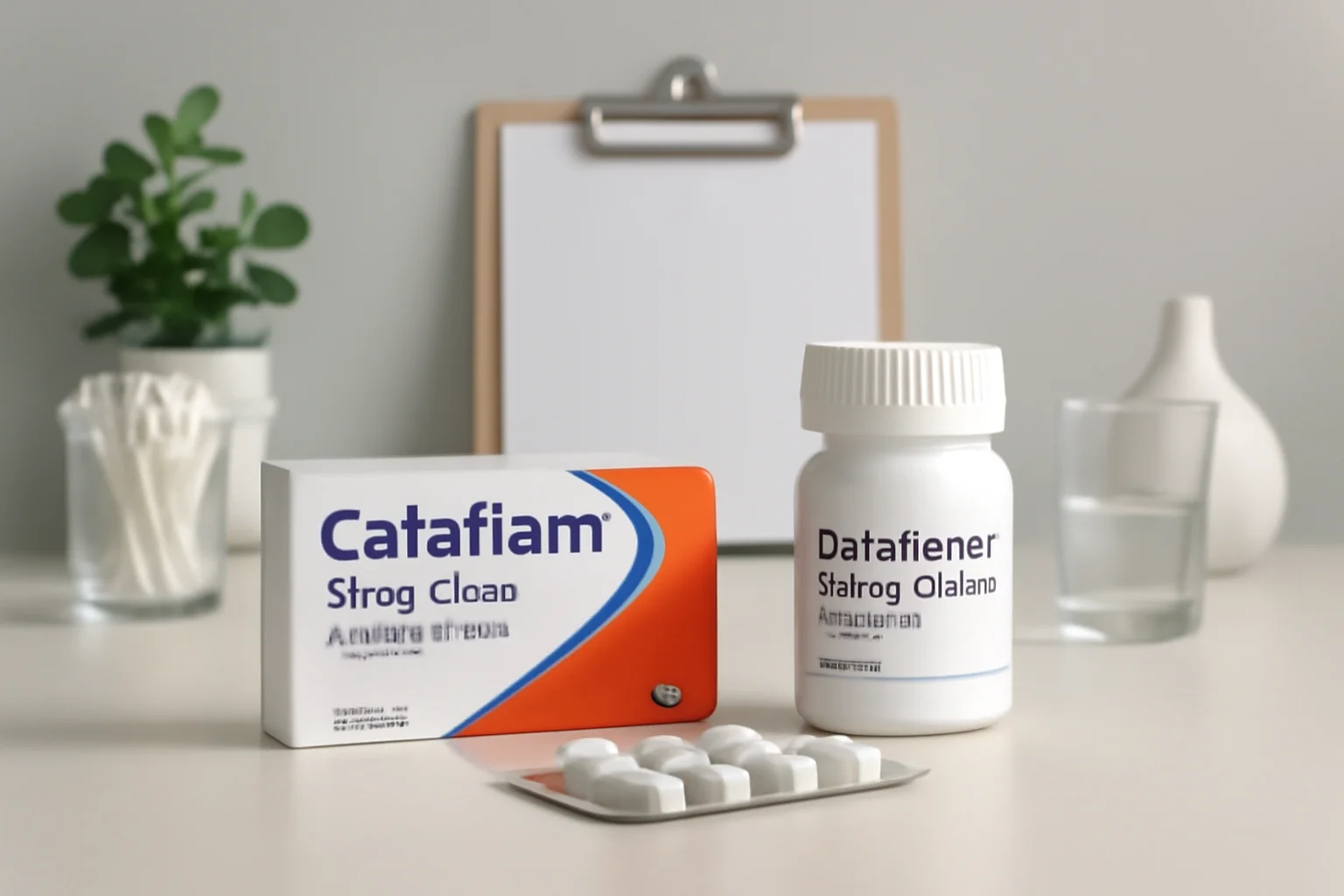
Cataflam and diclofenac: effects, usage, and side effects
A pain reliever world, Cataflam and diclofenac are popular and widely used medications. Both belong to the group of non-steroidal anti-inflammatory drugs (NSAIDs) and are often used to reduce various pains and inflammations. The active ingredient in Cataflam is diclofenac, so many may wonder what the difference is between the two. The effectiveness and side effects of such drugs are researched by many, as it is important for patients to receive accurate information due to the wide-ranging applications of pain relievers.
Pain relief is important not only for physical well-being but also for everyday living. Choosing the right medication can help patients quickly return to their usual lifestyle. The medical community continually works to provide the best solutions for pain management, and the use of Cataflam and diclofenac is widespread. Below, we will take a closer look at these medications, considering their effects, areas of application, and potential side effects.
Cataflam: application and mechanism of action
Cataflam is a popular pain reliever used to treat various conditions. Its main active ingredient is diclofenac, known for its anti-inflammatory and analgesic properties. Cataflam can be particularly effective for different types of pain, such as headaches, muscle pain, arthritis, and menstrual pain.
The mechanism of action of Cataflam is based on the inhibition of cyclooxygenase (COX) enzymes, which play a role in the synthesis of prostaglandins. Prostaglandins are natural compounds that cause inflammation, pain, and fever in the body. Cataflam blocks these enzymes, thereby reducing inflammatory reactions and pain perception.
The medication is available in tablet, suspension, and suppository forms, allowing patients to easily find the most suitable mode of application for them. Cataflam is rapidly absorbed from the gastrointestinal tract and generally takes effect within 30-60 minutes. The dosage usually depends on the severity of the pain and the patient’s overall condition, so it is important to follow the doctor’s instructions precisely.
Although Cataflam is an effective pain reliever, like all medications, it has side effects. The most common side effects include gastrointestinal discomfort, such as nausea, vomiting, and diarrhea. More serious reactions can occur less frequently, so it is always important to consult a doctor before using Cataflam.
Diclofenac: effects, areas of application, and side effects
Diclofenac is one of the most widely used non-steroidal anti-inflammatory drugs in the world. The medication is available in various forms, including tablets, gels, injections, and suppositories. Diclofenac is an effective pain reliever and anti-inflammatory agent, offering a wide range of applications.
Diclofenac is often used to treat chronic inflammatory conditions such as rheumatoid arthritis and osteoarthritis. It is also effective in managing postoperative pain and reducing inflammation following injuries. The mechanism of action of diclofenac is similar to that of Cataflam; by inhibiting COX enzymes, it reduces the levels of prostaglandins, thereby alleviating inflammation and pain.
The side effects of diclofenac are similar to those of Cataflam. The most common side effects include gastrointestinal issues such as heartburn, nausea, and diarrhea. Additionally, allergic reactions may occur, causing redness, itching, or swelling. Rarely, more serious side effects such as liver or kidney damage may occur.
Before using diclofenac, it is important for patients to inform their doctor about any existing conditions and medications they are taking, as diclofenac can interact with other medications, such as blood thinners or other anti-inflammatory drugs.
Cataflam and diclofenac: similarities and differences
Although Cataflam and diclofenac are closely intertwined, as Cataflam’s active ingredient is diclofenac, it is important to understand both the differences and similarities. The most significant commonality is that both medications belong to the group of non-steroidal anti-inflammatory drugs and operate through similar mechanisms. Both are effective in reducing pain and inflammation, making them widely used in various medical fields.
However, the differences between Cataflam and diclofenac mainly lie in the formulation and mode of application. Cataflam is available in various forms, such as tablets and suspensions, which may make it more convenient for patients to take the medication. Diclofenac, on the other hand, is available in several forms, including gels and injections, allowing for local application, thereby directly affecting painful areas.
Dosages can also vary, and while Cataflam generally acts more quickly, diclofenac can provide longer-lasting effects, especially in chronic conditions. Due to Cataflam’s rapid absorption, many prefer it for acute pain, while diclofenac plays a role in long-term pain relief.
While both medications can be effective, it is always advisable to seek medical advice for the best results in choosing the appropriate medication, taking into account the patient’s individual circumstances and the nature of their pain.
Warning: This article does not constitute medical advice. In case of health issues, always consult your doctor and follow their recommendations.

